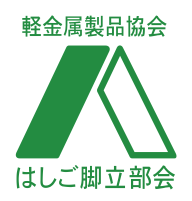Introduction
Ladders and stepladders are essential tools for working at heights, but their safety is heavily dependent on the marks and standard indications affixed to the products. This article explains the meaning and role of major safety marks such as the SG Mark, JIS Mark, and A Mark, and how to correctly interpret standard indications. It provides a clear summary of key points for site managers, purchasing managers, and health and safety supervisors in the manufacturing, construction, and logistics industries to prevent accidents and legal violations caused by selecting inappropriate products.
Basic Knowledge of Safety Marks and Standard Indications
Main Types of Safety Marks and Their Meanings
SG Mark: Awarded to products that meet the standards set by the Consumer Product Safety Association (CPSA). For stepladders and ladders, representative standards include CPSA0015 and CPSA0037.
JIS Mark: Affixed after an inspection by a third-party certification body registered by the government, based on the Japanese Industrial Standards.
A Mark: Indicates compliance with the standards of the Japan Light Metal Products Association, often found on lightweight and high-strength products.
Temporary Industrial Association Certified Mark: Certifies that the product meets the safety standards for temporary construction equipment.
Marks by Use and Specification
The Electrical Work Mark is displayed on products made of insulating materials like FRP to reduce the risk of electric shock. The Special Training Required Mark indicates, based on the Industrial Safety and Health Act, that the user must undergo prescribed training before using the product. Usage Environment Marks, such as “For Indoor Use Only,” “For Forestry,” or “For Construction Sites,” are crucial indicators that allow for at-a-glance judgment of the product’s suitable environment.
How to Read Standard Indications
Load Capacity and Working Load Standards
Load capacity is the core of safety assessment. Under JIS standards, 100 kg or 130 kg is common, and selection should be based on the application and the weight of the worker’s equipment. The “Maximum Working Load” indicates the upper limit of the total weight, including the user and any carried items, and must be checked separately from the load capacity.
Dimension and Structure Indications
Ladders and stepladders specify length and setup angle (e.g., recommended 75°). Failure to adhere to the angle increases the risk of tipping or slipping. Additionally, indications like “one-touch locking mechanism” or “horizontal folding structure” are important pieces of information that show ease of assembly/storage and enhanced safety.
Legal and Regulatory Indications
Based on the Industrial Safety and Health Act, certain tasks require the involvement of qualified personnel or those who have completed special training. The indications specify these conditions and whether a specific self-inspection is required for applicable equipment, such as mobile scaffolding. Checking these ensures legal compliance and safety.
Checklist for Selection
Safety Check
Always confirm that the product has a mark suitable for the usage environment. For outdoor work at heights, weather resistance and anti-rust performance are required, while for electrical work, insulation specifications are necessary. Investigate the reliability of the mark’s issuing body and refer to past certification cancellation cases and accident information.
Cost and Procurement Check
Products with marks tend to be more expensive than those without, but consider the long-term cost reduction effects from improved safety and durability. Also, conduct a comparative review with international standards (e.g., CE, ANSI) and make a comprehensive judgment that includes the application, delivery time, and maintainability.
Case Study: Accident Prevention by Checking Marks
In a manufacturing plant, an accident occurred where a worker fell due to structural failure while using a stepladder with unclear marks and standard indications (Before). Reflecting on this, the company switched all stepladders to products with the SG Mark and conducted internal training for all employees on how to read the marks and use the equipment correctly (Action). For the following five years, there have been zero major accidents. The improved safety rating also led to a reduction in insurance premiums (After).
Conclusion
This article has explained the meaning of safety marks and standard indications on ladders and stepladders, and how to check them. The SG Mark and JIS Mark are important proofs that support the product’s safety and legal compliance. The habit of checking these during selection leads to accident prevention and cost reduction. Please check the following for detailed standards and the latest information.





